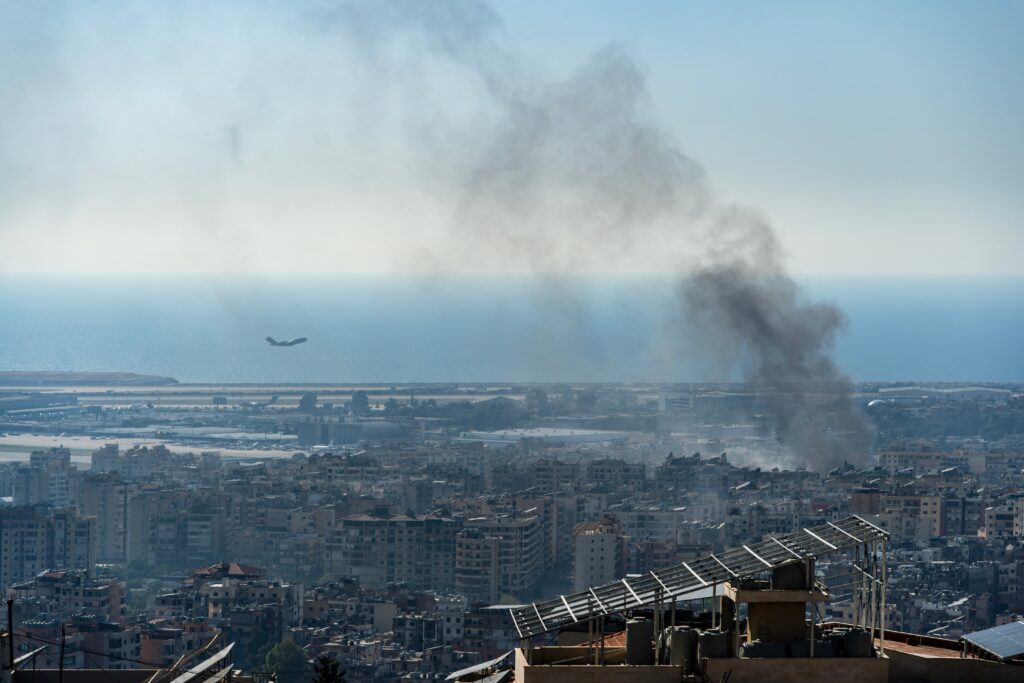IN THE MEDIA
An opportunity for Lebanon, a blow for Hezbollah
November 28, 2024 | Ahron Shapiro

The Australian – 28 November 2024
The US-brokered ceasefire that was struck on Wednesday between Hezbollah and Israel appears to mark a game-changing military achievement for the Israel Defence Forces against Iran’s strongest proxy and the most powerful terror army neighbouring Israel.
It came on the heels of a bold campaign of eliminating Hezbollah’s leader, Hassan Nasrallah, and other commanders with bombs and booby traps, and a systematic degrading of Hezbollah’s military power by destroying rocket storage and launch sites and scouring out terror infrastructure from wide swathes of southern Lebanon.
Israel’s remarkably well-executed war plan will surely be studied by military strategists for years to come.
In theory, it creates an opportunity for Lebanon to assert its sovereignty over its entire territory after decades of abandoning its south to powerful terrorist militias and cynical interference and manipulation from Iran.
It also may foretell a gradual winding down of this round of the multifront war by Iran and its proxies that was launched unilaterally by Hamas from the Gaza Strip on October 7 last year and joined by Hezbollah the next day, other regional proxies shortly thereafter and Iran itself in April and October.
However, like the impotent UN Security Council Resolution 1701 that closed out Hezbollah’s previous war with Israel in 2006 – a resolution that is referenced in the latest ceasefire agreement – the real test will be whether it can and will be fully implemented, respected and enforced by the Lebanese government and army.
That said, spoiler alert: Hezbollah will eventually look to undermine this deal. After all, Resolution 1701, which was supposed to have disarmed Hezbollah and kept it away from Israel’s border, turned out to be not worth the paper it was written on.
As such, the current ceasefire also will be a test for the international community, which must be ready to diplomatically uphold Israel’s freedom of action to defend itself against violations that inherently threaten Israel’s security.
Hezbollah, it should be recalled, began launching rockets, missiles and drones into Israel over what it claimed was an act of solidarity with the Hamas attack, killing scores of people and causing well over $2bn worth of damage, according to recent Israeli estimates. Until now, Hezbollah had linked its aerial offensive to Israel’s war against Hamas in Gaza, refusing to negotiate a separate ceasefire unless Israel also stopped fighting with Hamas.
Hamas, for its part, continues to refuse to agree to a ceasefire with Israel that does not include a complete Israeli withdrawal from Gaza. At the same time, Hamas refuses to consider a deal that would release all of the hostages, as it does not want to lose all of its human bargaining chips. These demands by the terror organisation cross all of Israel’s red lines, and so they should.
Hamas had been hoping that, together with Hezbollah and assistance from Iran’s proxies as well as Iran itself, it could outlast Israel’s resolve to fight and find the light at the end of its terror tunnels – a scenario where it could eventually rebuild its military strength to re-enact the massacre of October 7 “again and again”, as its officials had promised.
Wednesday’s agreement that unlinked Israel’s northern and southern fronts, and holds the promise of taking Hezbollah out of this war, represents a huge setback for Hamas’s plans.
Much of the IDF’s reserves will get a hard-earned respite from deployment, while others will be able to improve their focus on precision raids eliminating Hamas terror cells in parts of Gaza and the West Bank that continue to plan and carry out attacks on Israeli civilians and military personnel alike.
Increasingly isolated and under increasing pressure from the growing number of Gazans who have had enough of their Hamas overlords, Hamas will almost certainly be forced to lower its own demands.
This could improve prospects for the release of at least some of the 101 remaining hostages being held in Gaza, both the dead and the living, most of whom are believed to be close to death from mistreatment and malnutrition.
When considering the ceasefire with Hezbollah, it’s important not to lose sight of the larger picture of Iran’s jihadist playbook, which sees no contradiction between agreeing to tactical ceasefires and other similar setbacks and achieving its long-term strategic goal of wiping Israel off the map and then taking on the rest of the West.
Hezbollah’s 2006 war with Israel was followed by 18 years of not peace but patient military build-up towards the goal of capturing Israel’s Galilee. Only Nasrallah’s miscalculations gave Israel the military initiative to avert an outcome that would have been many times deadlier than October 7.
Lessons learned, the IDF will not stand idly by and watch Hezbollah violate the current ceasefire as it did since 2006. Lebanon, and the international community, must internalise this and act accordingly.





